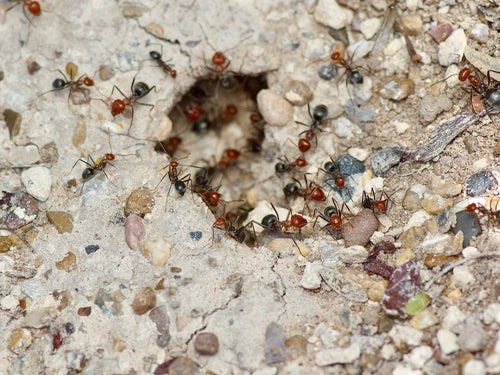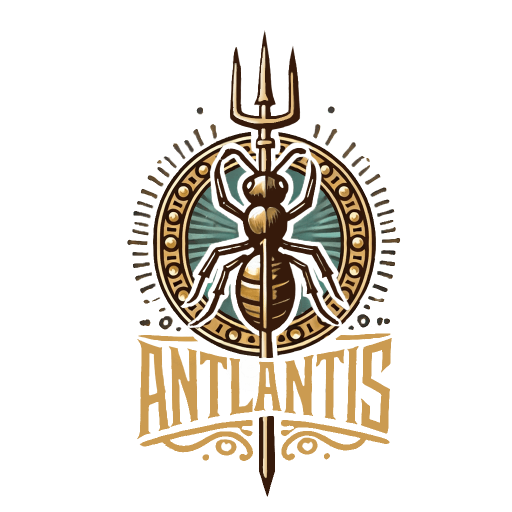
What are Honey Pot Ants?
Share
Honey Pot Ants are some of the most visually unique and behaviorally specialized ants in the insect world. Known for their incredible ability to store liquid food in the swollen abdomens of specialized workers called repletes, these ants thrive in some of the harshest desert environments. Their fascinating adaptations, ecological roles, and captivating colony dynamics have made them a favorite among scientists and ant keepers alike. In this article, we explore the biology, behavior, environmental significance, and care tips for Honey Pot Ants to offer a thorough look at what makes these ants so extraordinary.
- Introduction to Honey Pot Ants
- Unique Biological Features
- Colony Structure and Roles
- Ecological Significance
- Adaptations to Arid Environments
- Challenges and Threats
- Caring for Honey Pot Ants in Captivity
- Conclusion
Honey Pot Ants are one of the most fascinating and unique species within the vast and diverse world of ants. Renowned for their extraordinary ability to store liquid food, these ants play a crucial role in their colonies' survival and offer intriguing insights into the complexities of social insect behavior. In this article, we will explore the biology, behavior, and ecological significance of Honey Pot Ants, shedding light on why they captivate both scientists and ant enthusiasts alike.
Introduction to Honey Pot Ants
Honey Pot Ants belong to the genus Myrmecocystus, with various species exhibiting the distinctive honey storage behavior that gives them their common name. These ants are primarily found in arid and semi-arid regions of North America, particularly in the deserts of the southwestern United States and Mexico. Their unique adaptation allows them to thrive in environments where water and food resources are scarce.
Unique Biological Features
Specialized Workers: Repletes
The hallmark of Honey Pot Ants is their specialized worker caste known as repletes. Repletes have an enlarged crop (a specialized part of their digestive system) that acts as a storage reservoir. These ants are physiologically different from other workers in the colony. Instead of foraging for immediate food needs, repletes focus on storing liquid food, particularly sugary substances like nectar or honeydew, in their abdomens. Their distended abdomens can swell to several times their normal size, resembling living honey containers. This efficient system ensures that the colony has a steady supply of nutrients, even during periods of drought or scarcity.
Colony Structure and Roles
Division of Labor
Honey Pot Ant colonies exhibit a highly organized division of labor, with different castes performing specific roles:
- Queens: The primary reproductive individuals responsible for laying eggs.
- Males: In captive ant colonies, male ants occasionally appear but serve no practical purpose. Their sole role is reproduction during nuptial flights, which rarely occur in captivity. They don't contribute to tasks like foraging or brood care, making them largely redundant.
- Workers: General workers perform tasks such as foraging, caring for the brood, and maintaining the nest.
- Repletes: Specialized workers tasked with storing and distributing liquid food within the colony.
Nesting Habits
These ants typically construct their nests underground, creating complex tunnel systems with multiple chambers. The nests are strategically located to optimize access to food and water sources. In desert environments, Honey Pot Ants often nest in areas where moisture is available, such as near the base of vegetation patches.
Ecological Significance
Pollination and Seed Dispersal
Honey Pot Ants contribute to their ecosystems by aiding in pollination and seed dispersal. As they forage for nectar, they inadvertently transfer pollen between flowers, facilitating plant reproduction. Additionally, their movement through the soil can help disperse seeds, promoting plant diversity in their habitats.
Soil Aeration
The extensive tunneling activities of Honey Pot Ants enhance soil aeration, improving water infiltration and nutrient distribution. This aeration benefits plant roots and contributes to overall soil health, making these ants vital players in maintaining the balance of their ecosystems.
Adaptations to Arid Environments
Water Conservation
In the harsh desert climates where Honey Pot Ants thrive, water conservation is paramount. By storing liquid food in repletes, the colony minimizes the need for constant foraging, reducing water loss through evaporation. Additionally, their nests are constructed to maintain humidity levels, providing a stable microenvironment for the colony.
Temperature Regulation
Honey Pot Ant nests are ingeniously designed to regulate temperature, protecting the colony from extreme heat and cold. The underground chambers provide insulation, while the tunnel networks facilitate airflow, maintaining a consistent temperature that supports colony health and productivity.
Challenges and Threats
Habitat Loss
Like many other species, Honey Pot Ants face threats from habitat loss due to urbanization, agriculture, and climate change. Destruction of their natural habitats disrupts their nesting sites and reduces available food sources, posing significant challenges to their survival.
Predation and Competition
Honey Pot Ants must contend with predators such as birds, spiders, and other insects. Additionally, competition for resources with other ant species can impact their foraging success and colony growth.
Caring for Honey Pot Ants in Captivity
For ant enthusiasts interested in keeping Honey Pot Ants, understanding their unique needs is essential for successful colony maintenance.
Habitat Setup
A suitable formicarium or "ant farm" should mimic their natural environment, providing ample space, ventilation, and humidity control. Substrate should be well-draining to prevent mold growth, and the habitat should include vertical chambers for repletes to hang and store liquid food.
Feeding
Provide a balanced diet rich in sugars and proteins. Nectar substitutes, honey, and sugar water can be offered for carbohydrates, while feeder insects like fruit flies or small crickets supply essential proteins.
Temperature and Humidity
Maintain a stable temperature range that reflects their natural desert habitat, typically between 80-85°F (26-29°C). Humidity levels should be carefully controlled to prevent dehydration while avoiding excess moisture that can lead to mold or bacterial growth.
Monitoring Colony Health
Regularly inspect the colony for signs of stress, disease, or imbalance. Ensure that repletes are actively storing and distributing liquid food, and address any issues promptly to maintain a healthy and thriving ant colony.
Conclusion
Honey Pot Ants are a remarkable example of nature's ingenuity, showcasing specialized behaviors and adaptations that enable them to thrive in some of the planet's most challenging environments. Their unique liquid storage system, organized colony structure, and ecological contributions make them a subject of endless fascination for both scientists and hobbyists. Whether observed in the wild or nurtured in captivity, Honey Pot Ants continue to captivate those who seek to understand the intricate lives of these extraordinary insects.
If you're passionate about ants and interested in adding Honey Pot Ants to your collection, ensure you provide the right conditions and care to support their unique lifestyles. By doing so, you not only enjoy the beauty and complexity of these ants but also contribute to the preservation and appreciation of their vital role in our ecosystems.
Photo Credit:
Photo /, (c) Michelle W., some rights reserved (CC BY), uploaded by Michelle W.
